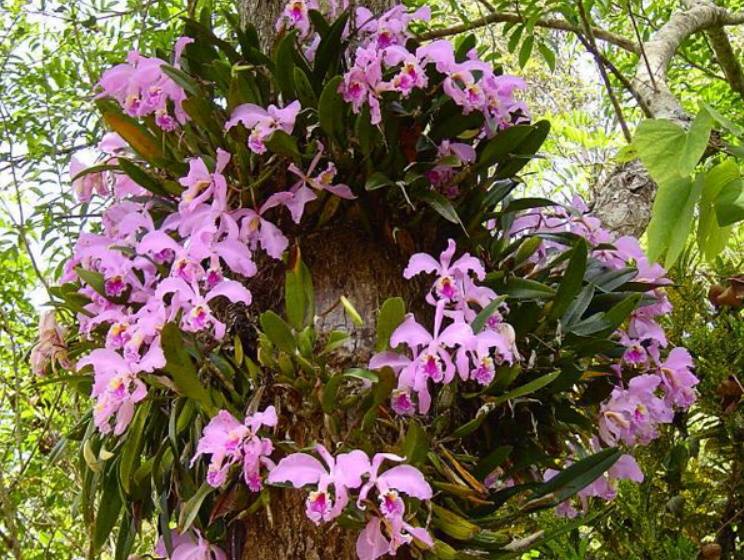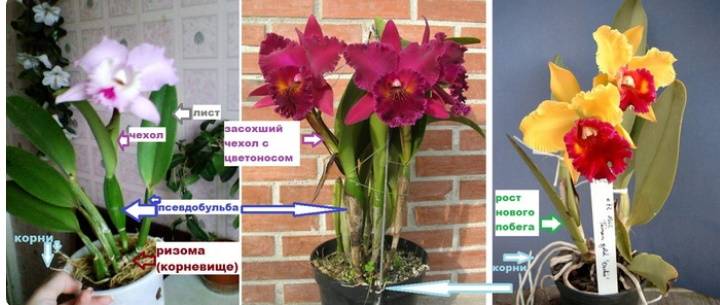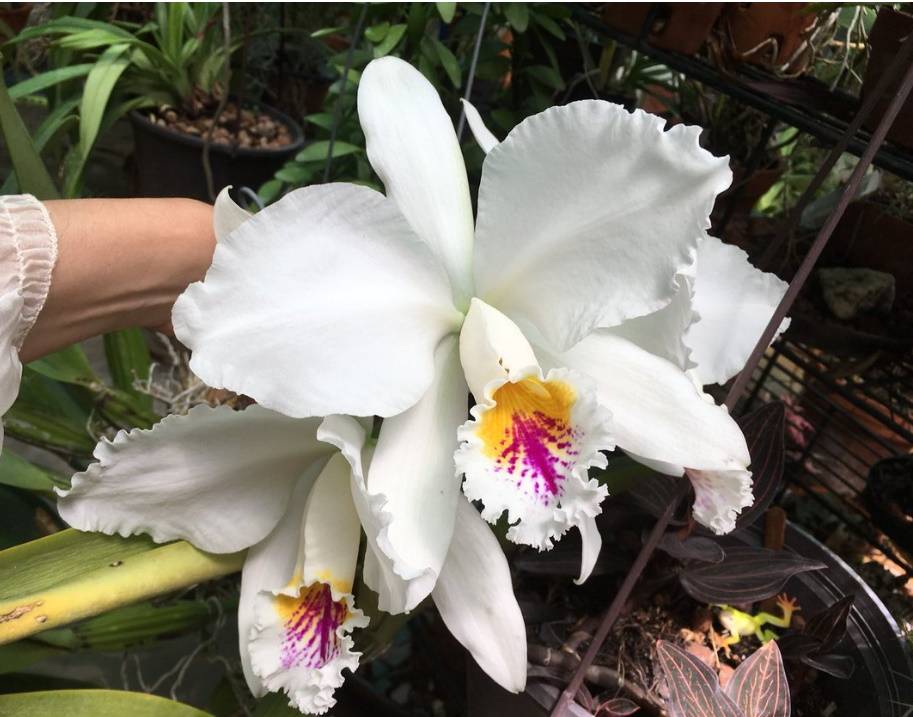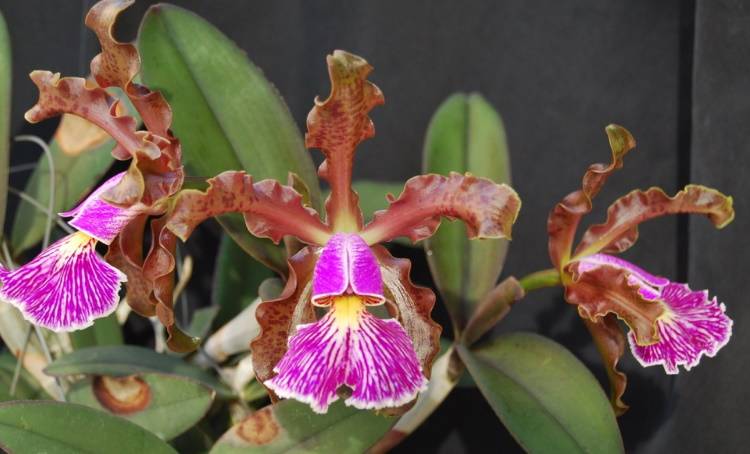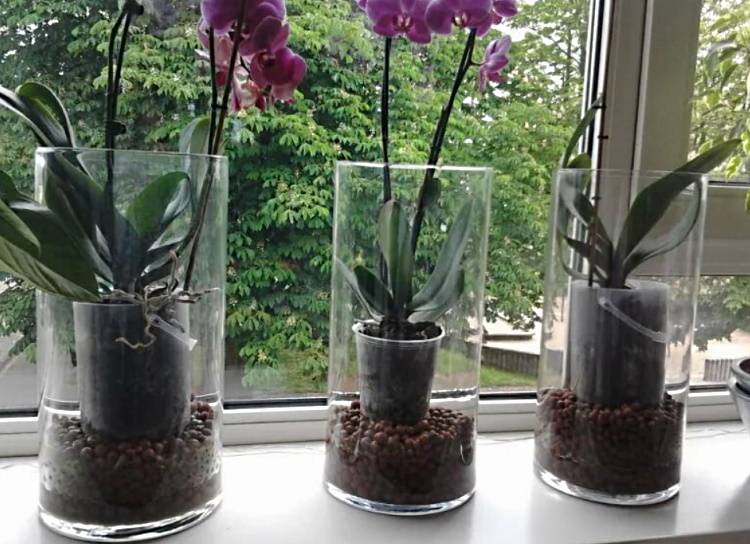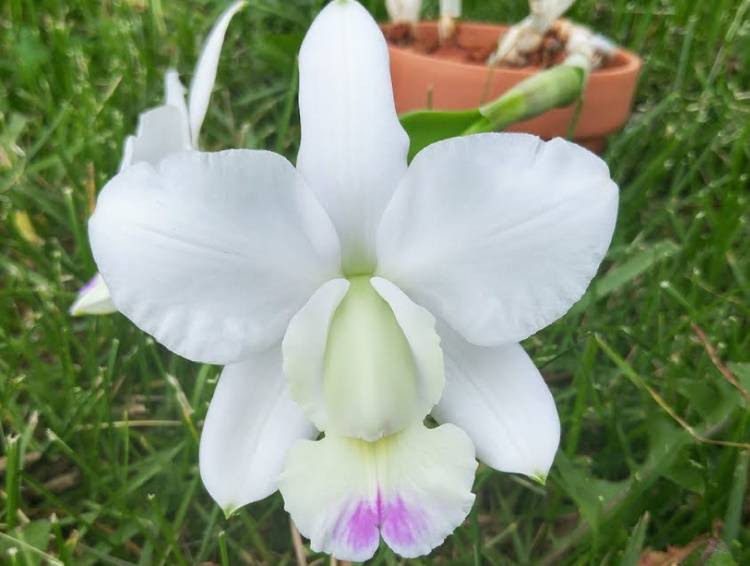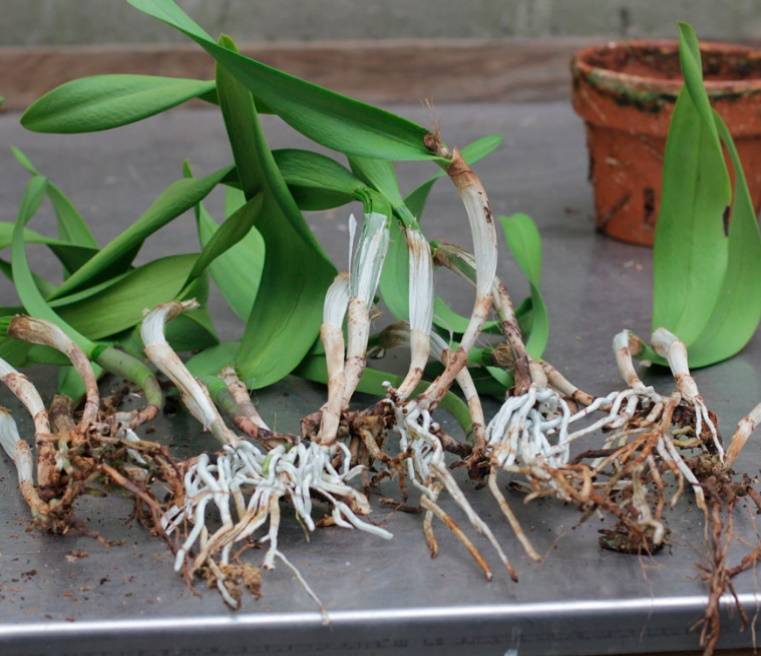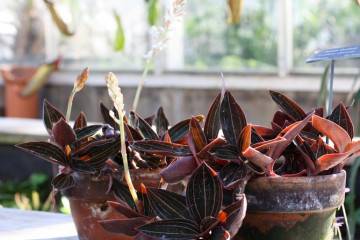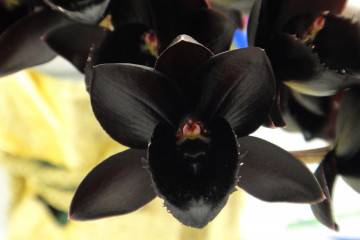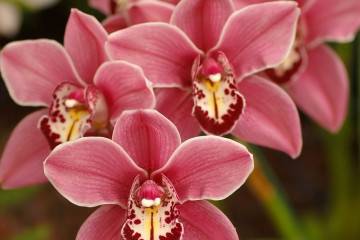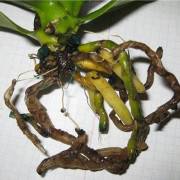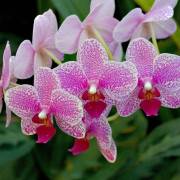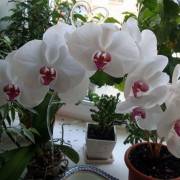Cattleya orchid - home care
Content:
- What do Cattleya orchids look like?
- The structure of flowers of the genus Cattleya
- Common varieties of Cattleya orchids
- Features of caring for plants of the genus Cattleya at home
- Cattleya orchids - care during the dormant period
- When and how orchids bloom
- Reproduction and transplantation of Cattleya orchids
- Disease and pests
Florists and plant lovers all over the world are fond of orchids. In nature, most orchid species grow in tropical climates, although a large part of them (approximately 900 species) as perennial shrubs and grasses are grown in temperate latitudes. There are 35,000 orchid species in total. Representatives of the genus Cattleya orchid from the Orchidáceae family are considered the most beautiful plants used in home floriculture.
What do Cattleya orchids look like?
Perennial tropical and subtropical orchids are used as indoor flowers. In the conditions of greenhouses, they can grow for several decades, among them there are centenarians aged 70 and more.
Representatives of the Orchidáceae family are classified according to the characteristics of the nutrient needed for their cultivation:
- epiphytes - are attached by aerial roots to supporting plants and live off nutrition obtained from the air and atmospheric precipitation;
- lithophytes - are content with rocky and stony rocks covered with moss, need bright sunlight;
- terrestrial plants - they require a nutritious soil substrate.
Cattleya's orchids (lat. Cattleya) are a genus of 187 plant species (natural and man-made), consists of perennial epiphytes and lithophytes, belongs to the Orchidáceae family.
The genus was named after the outstanding British merchant and gardener William Cattley. The natural habitat of plants - representatives of the genus are seasonally dry equatorial forests at an altitude of 100 to 400 meters above permanent water bodies.
Some types of orchids have become national plants, they are grown in artificial conditions as a state property. Many travelers to Costa Rica visit the botanical orchid garden, where La Cattleya Skinneri grows, a flower protected by the Costa Rica state.
On the territory of this country in March, the Orchid Week is held - a period of mass flowering of these plants.
The structure of flowers of the genus Cattleya
Indoor species Cattleya are numerous hybrids obtained by mixing different Orchidaceae species. They look like bushes with several superficial shoots and a horizontal rhizome - a rhizome (false bulb). From the rhizome, filaments of roots grow downward. From the buds of the rhizome, shoots grow upward - thickened stems (pseudobulbs or simply bulbs), in which nutrients and moisture accumulate. The shape of the bulb resembles a flattened spindle.
In the upper part of the bulb, hard leaves of an oblong, lanceolate, elliptical shape and peduncles are formed. Cattleya flower is formed by sepals and petals, not connected with each other. There are 6 petals, they are divided into 3 parts:
- a pair of opposite widened petals - petals;
- three narrowed petals (sepals) - sepals.
The lowest petal is called the labellum (lip). Usually, in color and structure, it differs from the rest of the petals. Blooming Cattleya emit pleasant and varied aromas, differing in the shape and shades of the inflorescences. They can be large-flowered - up to 18 cm in diameter, with 2-4 buds on a peduncle, and blooming miniature inflorescences.
Common varieties of Cattleya orchids
Orchid hybrids of the genus Cattleya are formed by crossing numerous forms and varieties of flowers. Some of the hybrid plants are particularly popular.
Among them:
- species Cattleya Walkeriana - varieties of Valkerian orchids differ in the size of the pseudobulbs and the size and color of the petals. Variety Alba is a white cattleya with snow-white inflorescences, Сoncolor (rosea) - pink, Werkhauserii - white tepals and a bluish lip;
- species Cattleya Schilleriana - 1-2 buds are formed on the peduncle of the plant, the flowers of Cattleya Schilleriana are colored in brown-red-olive shades, are up to 10 cm in diameter;
- species Cattleya Dowiana - refers to large-flowered plants, the cattleya doviana bulb can reach a length of 30 cm, produces leaves up to 25 cm in size, up to 5 buds are formed on the peduncle, flower petals are painted in light yellow shades, the lip is red-purple, the inflorescences have the smell of lilac;
- Cattleya Maxima - forms pink flowers on a peduncle up to 12 cm in diameter;
- Cattleya Schroederae - named after the famous orchid collector Baron J. H. W. von Schröder, has mauve petals, the inner lip is colored orange or dark yellow;
- Cattleya mossia - a varietal feature of Cattleya mossi is a funnel-shaped lip wavy at the edges of the purple color, the petals create large inflorescences up to 18 cm in diameter, can be painted in white, pale pink and lilac shades.
Flowers of the Cattleya family have original names. For example, the plant Cattleya Love Castle Kurenai (Slc. Love Castle Kurenai) is named after the castle of love. There are also opposite cases. An animated character in a computer game is named Cattleya Baudelaire (Baudelaire).
Features of caring for plants of the genus Cattleya at home
Representatives of the genus Cattleya begin to bloom no earlier than 2-3 years of age. In order for the plants at home to please the owners with long flowering, they need close to natural living conditions.
Habitat conditions
Cattleya orchids grow in hot climates with high humidity, during the year the flowers experience wet and dry seasons. During the day, the air heats up over + 30 ° C, at night it becomes cool. Strong night cooling of the air causes abundant dew to fall; orchids absorb it with their aerial roots during a drought.
During the year at equatorial latitudes, there is no sharp change in the length of daylight hours, there is no division into seasons, therefore the rest (rest) period for plants occurs after flowering, and not during a short daylight period, as in most plants of temperate climates.
Air temperature
In natural conditions, plants live in conditions of daily temperature fluctuations. Experienced growers know: if an adult Cattleya does not bloom, then one of the reasons may be insufficient difference between day and night temperatures.
During the day, the air temperature around orchids can be in the range of 25-30 ° C, at night it is 7-10 degrees lower.
Lowering the air temperature below + 12 ° C makes the plant slow down the development process. At t + 5 ° C, the orchid dies.
Lighting
The flowers of the Cattleya family need bright but diffused light. When grown on the south side of the house in summer, the windows are shaded from direct sunlight. If this is not done, the plant may burn or overheat.
For the summer season, a well-lit glazed loggia on the west or east side of the building is suitable for orchids. If the flowers are kept on the north side, then artificial illumination with phytolamps is used to increase the length of daylight hours.
It is important that the plants go through the process of getting used to the sun's rays before being taken out into the area of bright light. Adaptation should take place gradually, each time the time spent in the sun is increased by no more than 30 minutes.
For normal growth, flowers need not only a lot of light, but also a significant amount of fresh air. Without sufficient ventilation, they will not bloom, but they do not keep orchids in drafts either.
Watering, spraying and air humidity
The full development of Cattleya flowers during the growing season and flowering period depends on the substrate in which the plant roots will be located. The correct organization of irrigation is of no small importance.
For irrigation, use only settled tap, spring or rainwater at room temperature. Watering is carried out after the upper part of the substrate in the pot has been dry for 3 days. Plants definitely need a short dry period.
Watering should be abundant. After them, the substrate should not dry out immediately, but within 5-10 days (depending on the temperature and lighting at the location of the flower pot).
Watering is carried out very carefully - water should not fall on the leaves. The best way to moisturize the root substrate is to keep the flowerpot in a pan filled with water for 2-3 hours. Often, containers with plants are placed in trays on a layer of moist drainage material that gradually releases moisture to the orchid roots.
In the summer period of heat, air humidification is added to irrigation - either spraying the air in the plant growth zone, or next to flower pots, slightly away from them, put containers filled with water. The sun glare reflected from the water should not hit the orchid leaves. Thus, they achieve an increase in the level of humidity and a decrease in the temperature of the air.
Priming
To grow Cattleya orchids, they do not use soil and other soil components familiar to flower growers.
For flowers, a substrate is used, which may include tree bark (pine, spruce), moss, coal, crushed nut husks, peat, coconut fibers, perlite, expanded clay, vermiculite, small pieces of stones. The composition of the substrate should be such that it can hold moisture for about 5-7 days.
Top dressing
Cattleya orchids need nutrition during the growing season, flowering and reproduction.
Ready-made nitrogen-phosphorus-potassium fertilizers are used in minimal doses in spring during the growth of pseudobulbs.
During the period of flowering and reproduction, formulations containing phosphorus and potassium are used. Flowers are fed twice a month, root irrigation is used with formulations containing nutrients and leaf spraying.
Cattleya orchids - care during the dormant period
In late autumn or after flowering, the plants of the Cattleya family go into a dormant period for plants to recuperate.
Flowers at this time slow down their growth, there is no increase in volume, size and number of pseudobulbs, peduncles do not appear. At this time, orchids are harvested in partial shade, do not feed, reduce the air temperature to 16-18 ° C and the amount of watering.
When and how orchids bloom
It is possible to determine when the time comes for the flowering of the Cattleya orchid grown under artificial conditions is possible only after the appearance of the peduncle.
Peduncles appear on an adult, healthy bush that has enough nutrition and strength to reproduce. After all, the flowering of an orchid is the path to the formation of seed pods. Most often, peduncles appear in the spring, after a dormant period.
Some species bloom for 2-3 months, alternately forming buds. There are species with a short flowering period - no more than 1 month.
Reproduction and transplantation of Cattleya orchids
At home, orchids are propagated only by dividing the bush. Flowers are transplanted after a dormant period in the initial growing season. Professional cultivation of plants from seed or by cloning (mericlone method) requires certain skills and laboratory conditions.
For reproduction and transplantation of Cattleya orchids, it is necessary that the plants have a well-developed root system. The root system of the bush is divided into parts, each of them should have at least 2-3 pseudobulbs with living roots and at least one living point of growth. Each new bush is placed in a separate container.
Very often, when dividing a bush, it is found that the roots of the plant have dried up. Therefore, inexperienced flower lovers often have a question about how to grow roots in Cattleya. This question is also relevant in the event that a plant is purchased with rotten roots or an insufficient number of them.
To grow roots, the plant is placed in a mini-greenhouse with drainage holes. Fine-grained drainage material and sphagnum moss are placed at the bottom. The moss should always be moist. The decayed roots of the flower are cut off, the rhizome is treated with Fundazol, and then, after drying, is soaked for 20-30 minutes in Kornevin's solution or simply powdered with dry powder. The flower is placed on sphagnum moss, the upper part of the rhizome is also covered with a thin layer of moss. A transparent cap is put on the container.
The greenhouse is placed in a sunny warm place, regularly ventilated, condensation is removed from the walls of the container, make sure that the leaves and flower bulbs are dry, and the moss is moist. After the roots appear and grow up to 3-4 cm, the flower is planted in a separate container. The transplanted plant continues to be looked after in the usual way, they monitor watering, which does not allow root rot and other diseases.
Disease and pests
Improper watering can lead to gray and black rot on the stems, leaves and roots of orchids. Planting containers untreated from fungal diseases, soil substrate cause powdery mildew, bacterial spotting. Aphids, mealybugs, spider mites, scale insects, whitefly larvae can settle on orchids.
It is possible to eliminate diseases and pests, carry out preventive treatments with the help of modern biological products that destroy sources of diseases and insects in a safe way for humans. Such means include fungicidal and insecticidal preparations of targeted and general action.
Florists sometimes hesitate to grow Cattleya orchids in their home greenhouses, fearing that they will not cope with the task. Why this opinion was formed is not clear, because caring for plants of this family is no more difficult than for other types of orchids.

